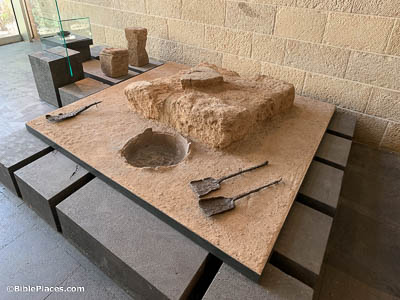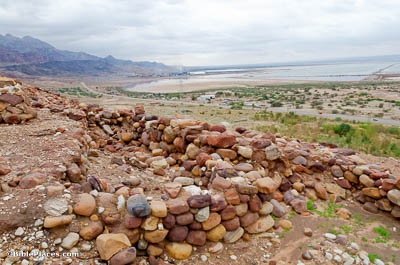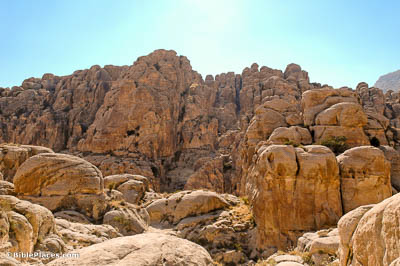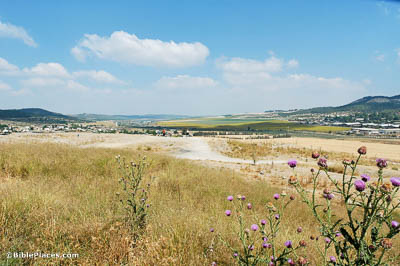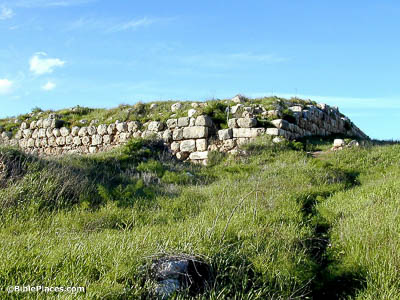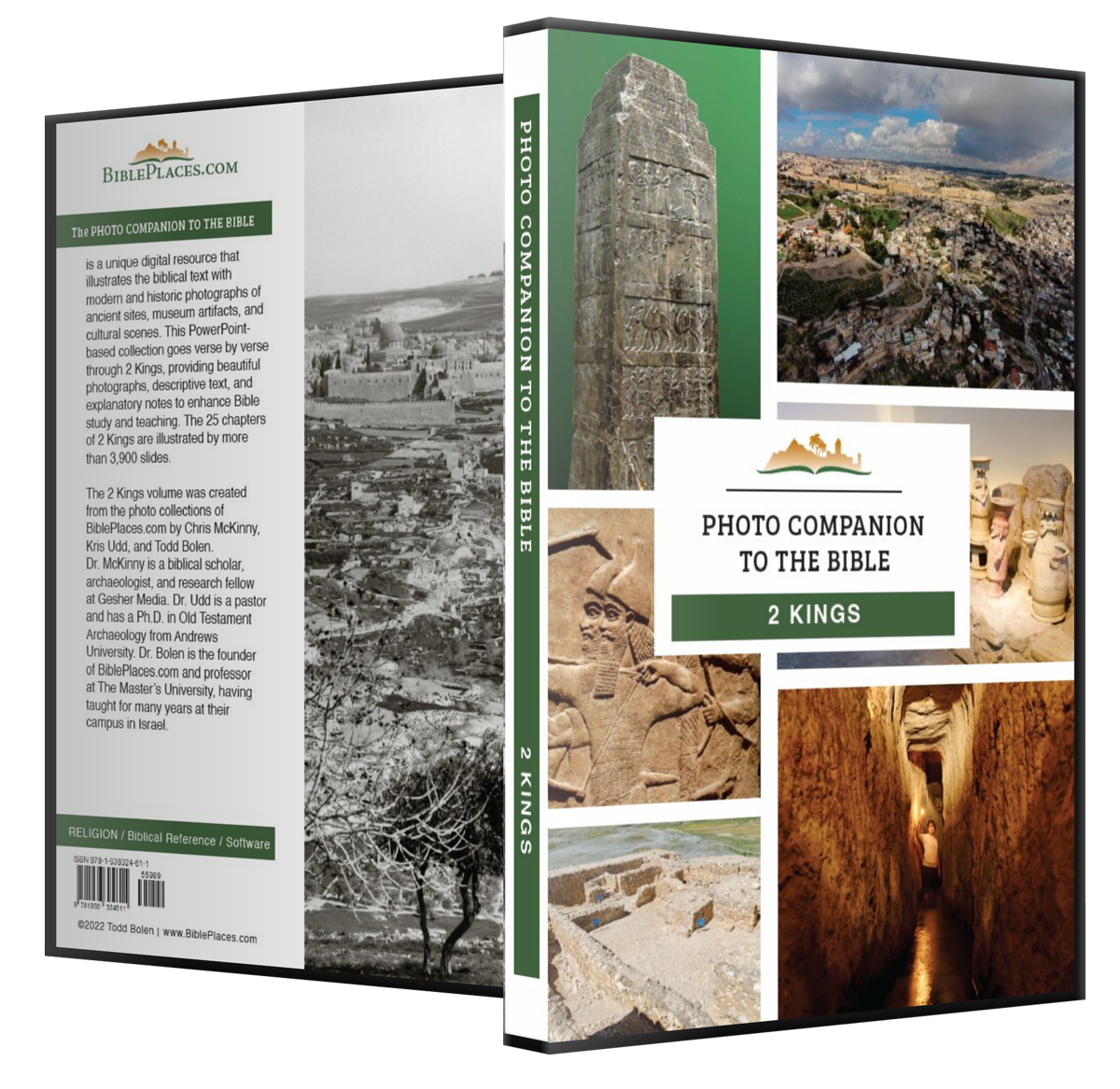And he instituted a feast for the Israelites and went up to the altar to burn incense (2 Kings 14:4).
This display includes a small altar made of five stones that was recovered from the 8th century BC high place at Tel Dan. The long-handled shovels were found next to it. Numerous long-handled shovels of this sort have been discovered in cultic settings from ancient Israel and the surrounding regions. They were probably used to collect live coals from a fire, which were then brought within the temple to have incense added, producing a fragrant smoke. This display was photographed at the Skirball Museum in Jerusalem.
